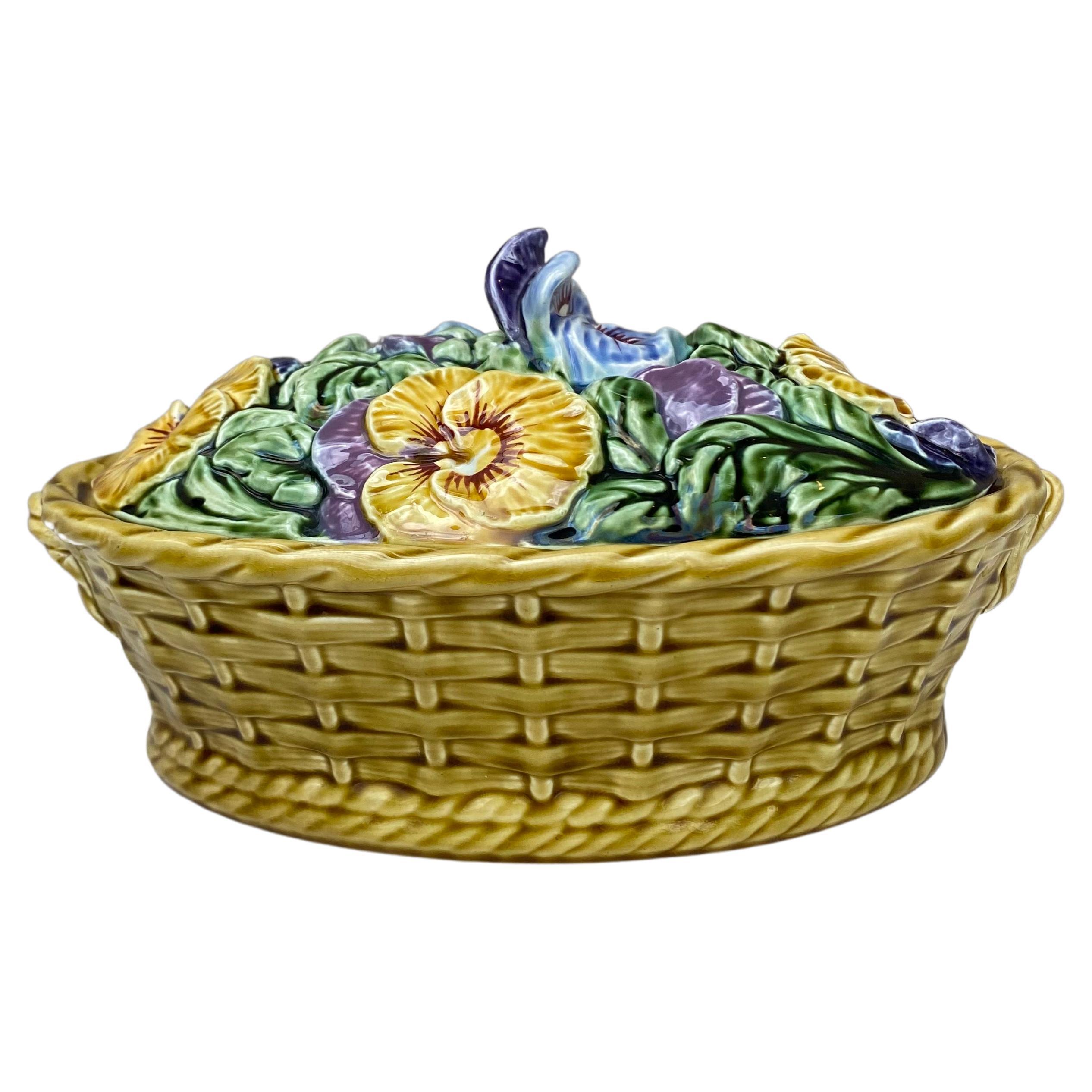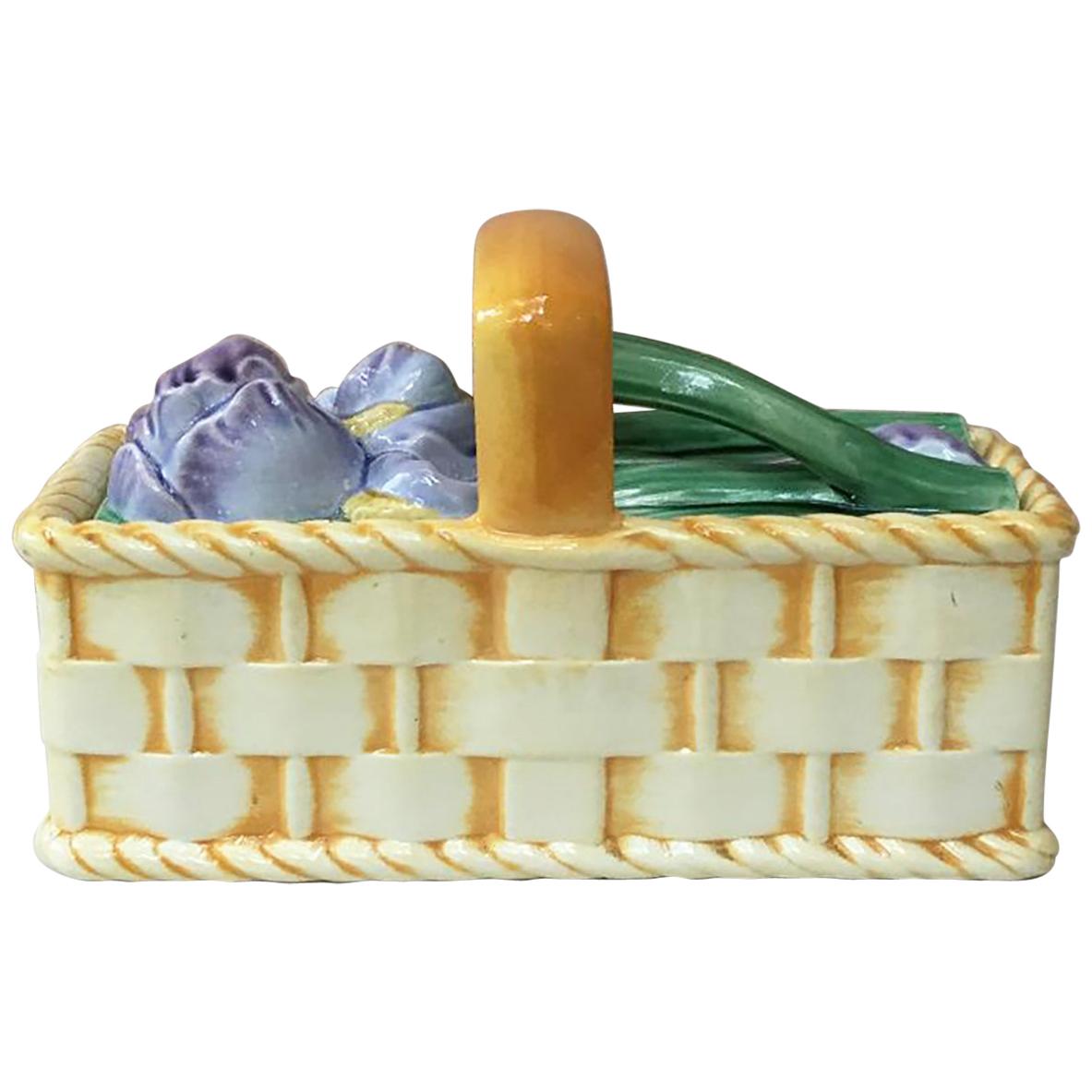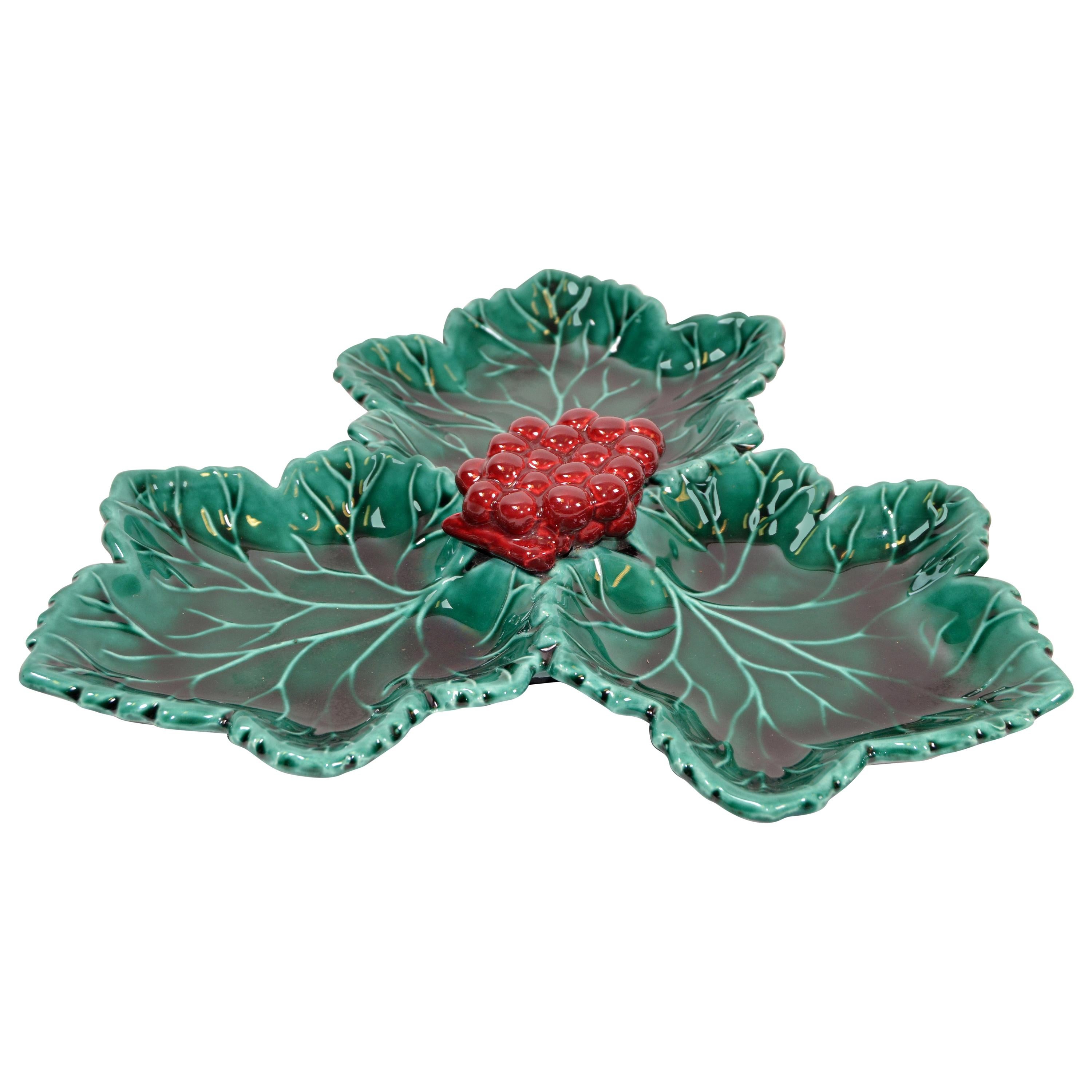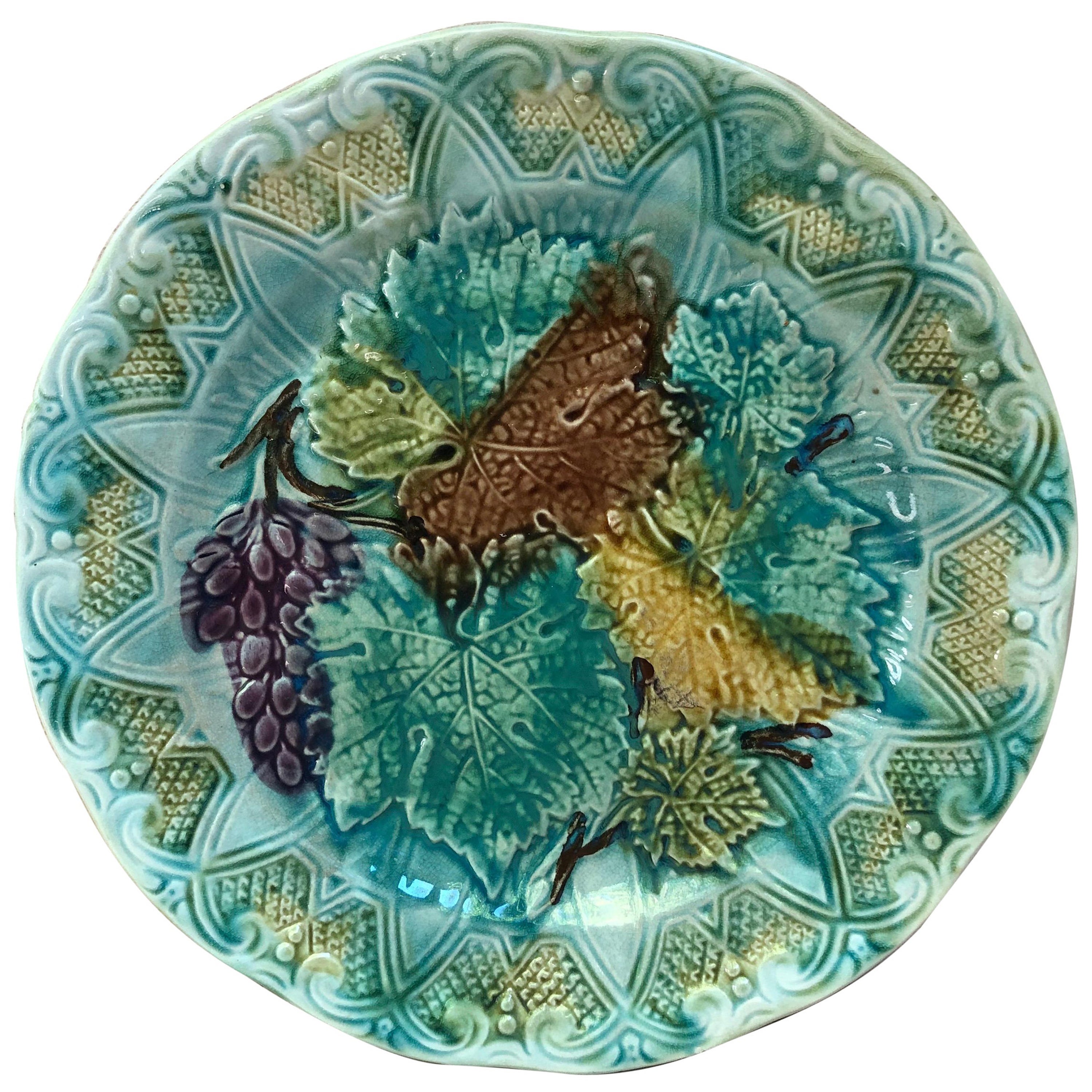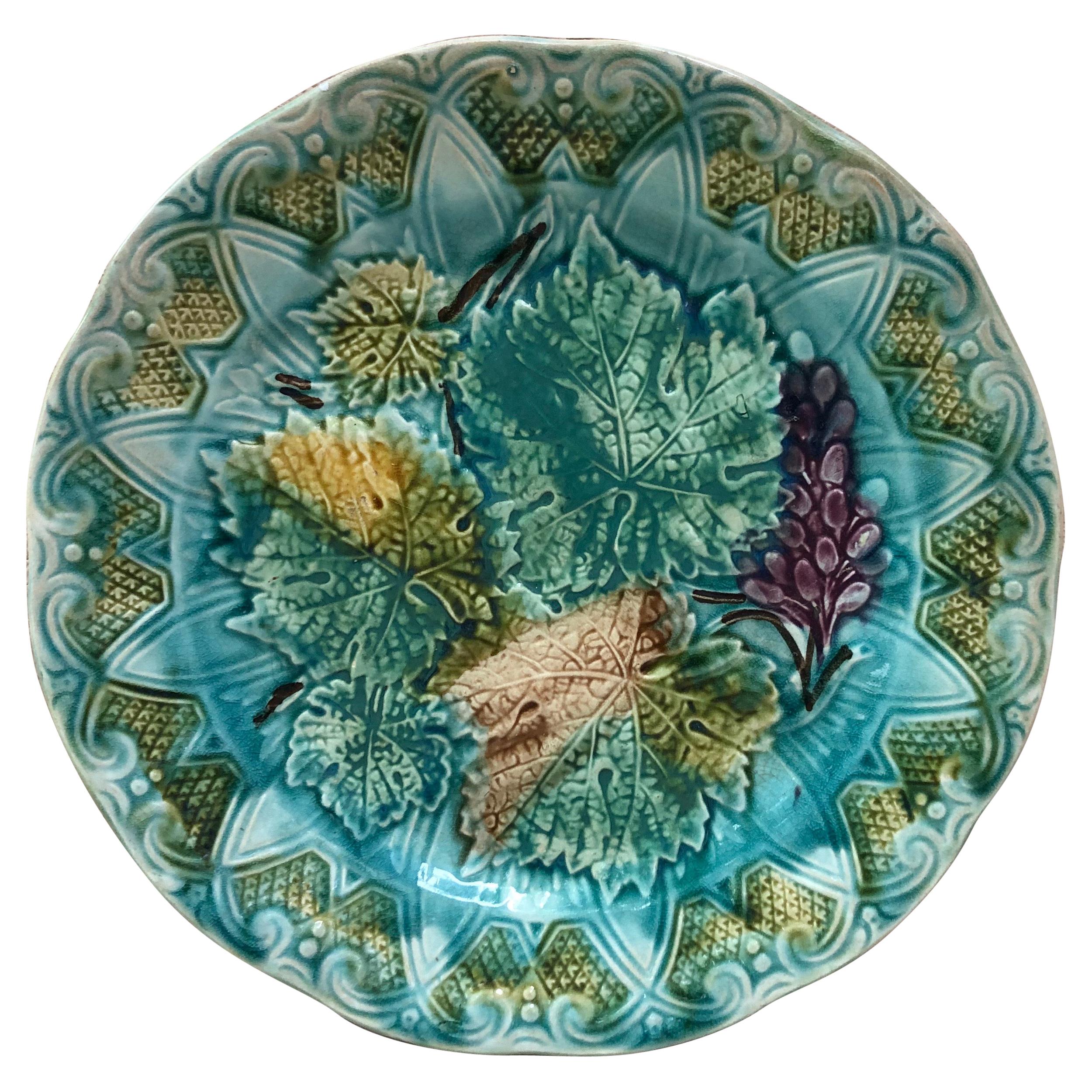Items Similar to French White Reticulated Grapes Basket, circa 1900
Want more images or videos?
Request additional images or videos from the seller
1 of 5
French White Reticulated Grapes Basket, circa 1900
About the Item
French white faience grapes-motif reticulated handled basket, circa 1900.
- Dimensions:Height: 6 in (15.24 cm)Width: 9 in (22.86 cm)Depth: 12.5 in (31.75 cm)
- Style:Romantic (In the Style Of)
- Materials and Techniques:
- Place of Origin:
- Period:1900-1909
- Date of Manufacture:1900
- Condition:Wear consistent with age and use.
- Seller Location:Austin, TX
- Reference Number:1stDibs: LU237936021813
About the Seller
5.0
Platinum Seller
These expertly vetted sellers are 1stDibs' most experienced sellers and are rated highest by our customers.
Established in 1995
1stDibs seller since 2016
1,503 sales on 1stDibs
Typical response time: <1 hour
- ShippingRetrieving quote...Ships From: Austin, TX
- Return PolicyA return for this item may be initiated within 1 day of delivery.
More From This SellerView All
- Majolica Pansies Basket Sarreguemines, circa 1920By SarregueminesLocated in Austin, TXLarge Oval Majolica basket with pansies flowers signed Sarreguemines, circa 1920.Category
Vintage 1920s French Art Nouveau Decorative Baskets
MaterialsCeramic, Faience, Majolica, Pottery
- Majolica Iris Basket Sarreguemines, circa 1920By SarregueminesLocated in Austin, TXLarge Majolica basket with iris flowers signed Sarreguemines, circa 1920.Category
Vintage 1920s French Art Nouveau Decorative Baskets
MaterialsCeramic, Faience
- French Enamel Reticulated Corn Poppy BasketLocated in Austin, TXFrench enamel reticulated basket with corn poppy motif, circa 1930. Wears, enamel loss.Category
Vintage 1930s European Rustic Decorative Baskets
MaterialsMetal
- French Majolica Leaves & Grapes Plate Onnaing, circa 1900By OnnaingLocated in Austin, TXFrench Majolica leaves & grapes plate Onnaing, circa 1900.Category
Antique Early 1900s French Country Dinner Plates
MaterialsCeramic, Faience
- French Majolica Leaves & Grapes Plate Onnaing, circa 1900By OnnaingLocated in Austin, TXFrench Majolica leaves & grapes plate Onnaing, circa 1900.Category
Antique Early 1900s French Country Dinner Plates
MaterialsCeramic, Faience
- French Majolica Leaves & Grapes Plate Onnaing, circa 1900By OnnaingLocated in Austin, TXFrench Majolica leaves & grapes plate Onnaing, circa 1900.Category
Antique Early 1900s French Country Dinner Plates
MaterialsCeramic, Faience
You May Also Like
- Two Pairs of Italian Maiolica Baskets, circa 1780By Antonio FerrettiLocated in Milano, ITTwo pairs of maiolica baskets Antonio Ferretti Manufacture Lodi, circa 1770-1790 Maiolica polychrome decorated “a piccolo fuoco” (third fire). Measures: A) Height 3.54 x 6.69 x 9.84 in (9 x 17 x 25 cm); B) Height 3.93 x 7.48 x 11.02 in (10 x 19 x 28 cm). Total weight 4.85 lb (2.200 kg) State of conservation: A) One of the smaller baskets has some areas of restoration, the other slight chipping from use; B) One of the larger baskets is intact and the other shows a clearly glued break. The mold with which the baskets were forged simulates a wicker weave. The two larger works have high, vertical walls, with branch-shaped handles penetrating the weave. The painted decorations, small polychrome flowers applied only externally, highlight the points where the weaves intersect. The decision to leave the center of the basket devoid of decoration is highly unusual, but given the size and complexity of the shape, as well as the quality of the enamel, it is possible to hypothesize that it represents a precise choice in manufacturing or for a particular client. The two smaller baskets have small, twisted handles and, on the outside, reproduce more decisively the characteristic wicker weave, obtained through thin molded lines. The interior exhibits a rich, typical decoration of naturalistic flowers: a bunch centered around a main flower and secondary stems accompanied by small “semis”. The exterior of these works is also adorned with small little flowers where the weaves intersect. The size and morphological characteristics of the baskets confirm their attribution to the Lodi factory of Antonio Ferretti between 1770 and 1790, during its most successful period; by this point his original reworking of the "Strasbourg" decoration, known as "old Lodi", had achieved great fame even outside Italy. This decorative choice represented a strong point of the Lodi factory, which established itself thanks to the vivid nature of the colors made possible by the introduction of a new technique perfected by Paul Hannong in Strasbourg and which Antonio Ferretti introduced in Italy. This production process, called “piccolo fuoco” (third fire), allowed the use of a greater number of colors than in the past; in particular, the purple of Cassius, a red made from gold chloride, was introduced. Its use allowed for many more tones and shades, from pink to purple. The Ferretti family had started their maiolica manufacturing business in Lodi in 1725. The forefather Simpliciano had started the business by purchasing an ancient furnace in 1725 and, indeed, we have evidence of the full activity of the furnaces from April of the same year (Novasconi-Ferrari-Corvi, 1964, p. 26 n. 4). Simpliciano had started a production of excellence also thanks to the ownership of clay quarries in Stradella, not far from Pavia. The production was so successful that in 1726 a decree of the Turin Chamber came to prohibit the importation of foreign ceramics, especially from Lodi, to protect internal production (G. Lise, La ceramica a Lodi, Lodi 1981, p. 59). In its initial stages, the manufacture produced maolicas painted with the “a gran fuoco” (double fire) technique, often in turquoise monochrome, with ornamentation derived from compositional modules in vogue in Rouen in France. This was also thanks to the collaboration of painters like Giorgio Giacinto Rossetti, who placed his name on the best specimens next to the initials of the factory. In 1748 Simpliciano made his will (Gelmini, 1995, p. 30) appointing his son Giuseppe Antonio (known as Antonio) as universal heir. After 1750, when Simpliciano passed away, Antonio was directly involved in the maiolica factory, increasing its fortunes and achieving a reputation on a European level. Particularly important was the aforementioned introduction in 1760 of the innovative “a piccolo fuoco” (third fire) processing, which, expanding the ornamental repertoire with Saxon-inspired floral themes, could commercially compete with the German porcelains that had one of its most renowned offerings in the naturalistic Deutsche Blumen. Antonio Ferretti understood and promoted this technique and this decoration, proposing it in a fresher and more corrective version, less linked to botanical tables...Category
Antique 1770s Italian Neoclassical Ceramics
MaterialsMaiolica
- Vallauris French Glazed Grapes & Vine Leaves Ceramic Serving Plate Green and RedBy VallaurisLocated in Miami, FLFrench Mid-Century Modern glazed grapes and vine leaves ceramic, pottery serving plate in emerald green and red from Vallauris (small village on the French Riviera). Marked at the B...Category
Vintage 1960s French Mid-Century Modern Ceramics
MaterialsCeramic
- HORIZON - Mid Century Studio Pottery Basket / Bowl / Vase - Italy - Circa 1960'sLocated in Chatham, ONHORIZON - Mid Century studio pottery basket / bowl / vase with white glazed handle and interior - hand made - featuring incised and white glazed leaves to the exterior of the bowl - ...Category
Mid-20th Century Italian Mid-Century Modern Decorative Baskets
MaterialsTerracotta, Ceramic
- Georgian Mason's Ironstone Dish or Plate in Bamboo & Basket Pattern, circa 1817By Mason's IronstoneLocated in Lincoln, LincolnshireThis is a very decorative dish or plate by Mason's Ironstone, Lane Delph, England in the Bamboo and Basket pattern, dating to the early 19th century, Georgian period, circa 1813-1820...Category
Antique Early 19th Century English Chinoiserie Ceramics
MaterialsIronstone
- Mid-Century French Hand Painted Barbotine Ceramic Fruit Basket CenterpieceLocated in Dallas, TXDecorate a tabletop with this colorful, majolica basket composition. Crafted in France circa 1960, the centerpiece features a realistic assortment of fruits and vegetables in high re...Category
Mid-20th Century French Decorative Baskets
MaterialsCeramic, Majolica
- French Art Deco Handcrafted Ceramic Basket or Bowl by Henri DelcourtLocated in Miami, FLStunning French Art Deco ceramic basket or bowl with handles, circa 1930. This beautiful decorative object is signed H D and numbered, it was handcrafted by Henri Delcourt a well kn...Category
Early 20th Century French Art Deco Decorative Bowls
MaterialsCeramic
Recently Viewed
View AllMore Ways To Browse
Antique Grapes
French Grape
Decorative Grapes
White French Antique Bedroom Furniture
White Faience
Grape Motif
White Grapes
Antique White Bowls
French White Faience
Reticulated Basket
Large Rattan Baskets
Mesh Basket
Wood Basket Lid
Blue Woven Basket
Bee Hive
Decorative Waste Bin
Vintage Trash
Rattan Basket With Top
